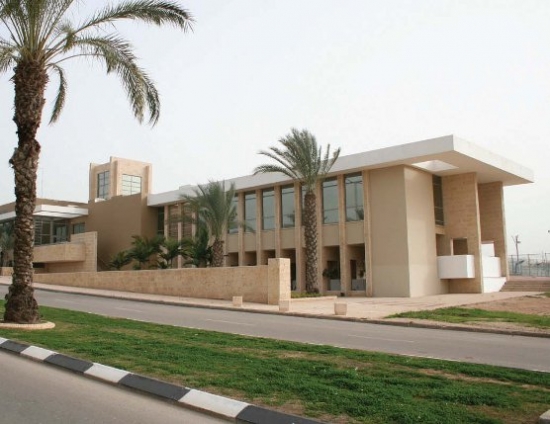
"The sun shall not strike you by day"
Photos & Text By Becci Fleischer
Netivot is a small city in Southern Israel, surrounded by the desert of the North-Western Negev. On entering the city one notices the usual mix of contrasting features which characterize the local towns – miles of plastic-covered greenhouses, neglected public housing, stray dogs, glamorous new shopping centers and small-scale traffic jams. However, Netivot is also home to a multitude of interesting buildings, some of them designed by local architects. Meir Krispin, a Moroccan-Israeli architect who was born and raised in Netivot, sees his work in designing some of the city’s most important buildings as a personal “mission”. Meir happily agreed to take me on a tour of the Netivot Public Library which he designed in 2002.
The design of the library is inspired by the ancient Roman philosopher, Marcus Tullius Cicero, who wrote that “if you have a garden and a library, you have everything that you need”. The building covers two floors, with the upper level serving as the library and the lower floor as the garden. The two levels are connected by a tower which floods the library with fresh air and natural light. By connecting the inside and outside spaces, Meir aimed to create an inspirational space suited to intellectual “wandering” and contemplation. However, the design is also functional, integrating a lending library, reference section, children’s reading room, internet center and auditorium, as well as quiet spaces for reading and studying. Many of the windows provide expansive views over the city and the desert beyond, and some look into the garden which is still being developed.
Meir is critical of the romanticizing of desert architecture, which encourages the use of “trendy” elements such as mud walls and Arabic shapes. Instead he focuses on practical considerations, such as the need for shaded light and natural cooling mechanisms in the burning heat of the desert. He quotes King David in Tehilim (Chapter 121) as one of his sources of inspiration; “The sun shall not strike you by day”. Vertical and horizontal design elements in the structure of the library break the light so that the building is filled with gentle indirect light rather than the overwhelming glare of direct sunlight. The southern wall of the library has no windows, as this is where the strongest sun hits the building, and the auditorium (which requires no windows) is located here. Large shielded windows are located on the northern side, again to maximize shaded natural light inside the building. The tower and garden are oriented to catch the shade and cool afternoon sea breezes. The overall effect is that of an oasis.
We visited the library on a busy weekday afternoon. The space was full of activity: children reading and fighting over computers, librarians fielding requests from customers, people wandering the shelves and perusing displays about local soldiers, arts events and book releases. Meir complained that the interior was too busy with clutter, which detracted from the original design. However, to me the building felt lived-in and well used, alive with the energy of the adults and children who fill its corridors and corners on a daily basis. Perhaps it doesn’t have the atmosphere of quiet contemplation for which it was originally designed, but then Israelis are not known for their quiet and contemplative nature. Instead, the Netivot public library is a busy, crowded, noisy and well-loved space which the people of Netivot have taken and made their own.
The library is one of a complex of three buildings which Meir designed, but only the library has been built to date. The other two buildings, a youth center and local museum, have not yet been built due to lack of funding.
 Israel: Reclaiming the Narrative - A Review
Israel: Reclaiming the Narrative - A Review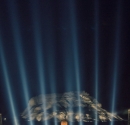 ESRA Outing to Aida at Masada
ESRA Outing to Aida at Masada 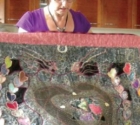 Coffee Group for Immigrants enters 5th year
Coffee Group for Immigrants enters 5th year-1450935317.jpg) Spending a Week in Tel Aviv
Spending a Week in Tel Aviv 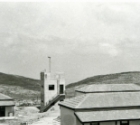 Ma'ale Hachamisha
Ma'ale Hachamisha-1450857993.jpg) Jazz in a Pearl Garden
Jazz in a Pearl Garden 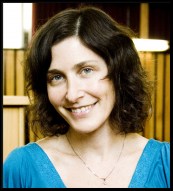 Becci Fleischer
Becci Fleischer